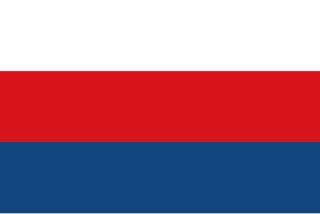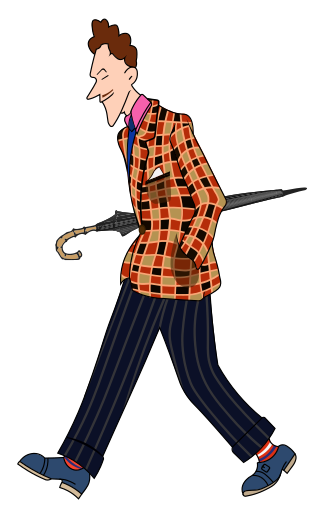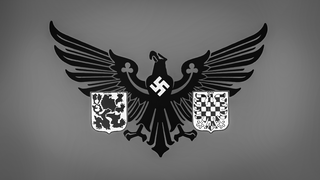
The Sudetenland is the historical German name for the northern, southern, and western areas of former Czechoslovakia which were inhabited primarily by Sudeten Germans. These German speakers had predominated in the border districts of Bohemia, Moravia, and Czech Silesia since the Middle Ages. Since the 9th century the Sudetenland had been an integral part of the Czech state both geographically and politically.

The Protectorate of Bohemia and Moravia was a partially-annexed territory of Nazi Germany that was established on 16 March 1939 after the German occupation of the Czech lands. The protectorate's population was mostly ethnic Czech.

Emil Dominik Josef Hácha was a Czech lawyer, the president of Czechoslovakia from November 1938 to March 1939. In March 1939, after the breakup of Czechoslovakia, Hácha was the nominal president of the newly proclaimed German Protectorate of Bohemia and Moravia.

The zazous were a subculture in France during World War II. They were young people expressing their individuality by wearing big or garish clothing and dancing wildly to swing jazz. Men wore large striped lumber jackets, while women wore short skirts, striped stockings and heavy shoes, and often carried umbrellas.
The Swing Youth were a youth counterculture of jazz and swing lovers in Germany formed in Hamburg in 1939. Primarily active in Hamburg and Berlin, they were composed of 14- to 21-year-old Germans, mostly middle or upper-class students, but also including some in the working class. They admired the "American way of life", defining themselves in swing music and opposing Nazism, especially the Hitler Youth. They loosely structured themselves into “clubs” with names such as the Harlem Club, the OK Gang, and the Hot Club. This underground subculture, distinctly nonconformist with a focus on African-American music, was active in the German youth scene. Despite being largely apolitical and unstructured, the Swing Youth were targeted and, in some cases, repressed by the Nazi government.

Karl Hermann Frank was a Sudeten German Nazi official in the Protectorate of Bohemia and Moravia prior to and during World War II. Attaining the rank of Obergruppenführer, he was in command of the Nazi police apparatus in the protectorate, including the Gestapo, the SD, and the Kripo. After the war, he was tried, convicted and executed by hanging for his role in organizing the massacres of the people of the Czech villages of Lidice and Ležáky.

Jaroslav Krejčí was a Czech lawyer and Nazi collaborator. He served as the prime minister of the Protectorate of Bohemia and Moravia from 28 September 1941 to 19 January 1945.

Emanuel Moravec was a Czech army officer and writer who served as the collaborationist Minister of Education of the Protectorate of Bohemia and Moravia between 1942 and 1945. He was also chair of the Board of Trustees for the Education of Youth, a fascist youth organisation in the protectorate.

German Bohemians, later known as Sudeten Germans, were ethnic Germans living in the Czech lands of the Bohemian Crown, which later became an integral part of Czechoslovakia. Before 1945, over three million German Bohemians constituted about 23% of the population of the whole country and about 29.5% of the population of Bohemia and Moravia. Ethnic Germans migrated into the Kingdom of Bohemia, an electoral territory of the Holy Roman Empire, from the 11th century, mostly in the border regions of what was later called the "Sudetenland", which was named after the Sudeten Mountains.

These are lists of political office-holders in the Protectorate of Bohemia and Moravia, which from 15 March 1939 until 9 May 1945 comprised the German-occupied parts of Czechoslovakia. The lists include both the representatives of the recognized Czech authorities as well as the German Reichsprotektoren and the Staatsminister, who held the real executive power.
International Students' Day is an international observance of the student community, held annually on 17 November. Originally commemorating the Czech universities which were stormed by Nazis in 1939 and the students who were subsequently killed and sent to concentration camps, it is now marked by a number of universities, sometimes on a day other than 17 November, as a nonpolitical celebration of the multiculturalism of their international students.

The history of the Jews in the Czech lands, historically the Lands of the Bohemian Crown, including the modern Czech Republic, goes back many centuries. There is evidence that Jews have lived in Moravia and Bohemia since as early as the 10th century. Jewish communities flourished here specifically in the 16th and 17th centuries, and again in the late 19th and early 20th centuries. Local Jews were mostly murdered in the Holocaust, or exiled at various points. As of 2021, there were only about 2,300 Jews estimated to be living in the Czech Republic.

Český národně socialistický tábor — Vlajka was a Czech fascist, antisemitic and nationalist movement. Vlajka's eponymous newspaper was founded in 1928, its first editor being Miloš Maixner. During the time of German occupation, the organisation collaborated with the Nazis for which it was banned and its members were punished after the liberation.

Czechoslovak resistance to the German occupation of the Protectorate of Bohemia and Moravia during World War II began after the occupation of the rest of Czechoslovakia and the formation of the protectorate on 15 March 1939. German policy deterred acts of resistance and annihilated organizations of resistance. In the early days of the war, the Czech population participated in boycotts of public transport and large-scale demonstrations. Later on, armed communist partisan groups participated in sabotage and skirmishes with German police forces. The most well-known act of resistance was the assassination of Reinhard Heydrich. Resistance culminated in the so-called Prague uprising of May 1945; with Allied armies approaching, about 30,000 Czechs seized weapons. Four days of bloody street fighting ensued before the Soviet Red Army entered the nearly liberated city.
The 1939–40 Národní liga was the first season of the Národní liga, the first tier of league football in the Nazi Germany-annexed Protectorate of Bohemia and Moravia which had been part of Czechoslovakia until March 1939.

Mánička is a Czech term used for young people with long hair, typically men, in Czechoslovakia through the 1960s and 1970s. Long hair for males during this time was considered an expression of political and social attitudes in communist Czechoslovakia.
Obrana národa was a Czech resistance organization that fought against the German occupation from 1939 to 1945. It opposed Nazi rule in the Protectorate of Bohemia and Moravia. The group was founded by General Josef Bílý in April 1939.

The Curatorium for the Education of Youth was an organization in the Protectorate of Bohemia and Moravia that provided athletic and cultural activities for youth ages ten to 18. Though created at the impetus of officials in the German-backed Protectorate government, it evolved to promote a distinctive form of "Reich-loyal" Czech nationalism that was viewed with concern by some quarters of the Nazi Party. Following World War II, it was banned as a fascist organization and its principal leaders put on trial.

The Holocaust in Bohemia and Moravia resulted in the deportation, dispossession, and murder of most of the pre-World War II population of Jews in the Czech lands that were annexed by Nazi Germany between 1939 and 1945.

Arijský boj was a pro-Nazi Czech-language weekly tabloid newspaper published between May 1940 and May 1945 in the Protectorate of Bohemia and Moravia. Inspired by the Nazi newspaper Der Stürmer, the newspaper made antisemitism its main theme and was also critical of the Czechoslovak government-in-exile. Denunciations published by the newspaper contributed to the isolation of Jews during the first years of the Holocaust in Bohemia and Moravia.














